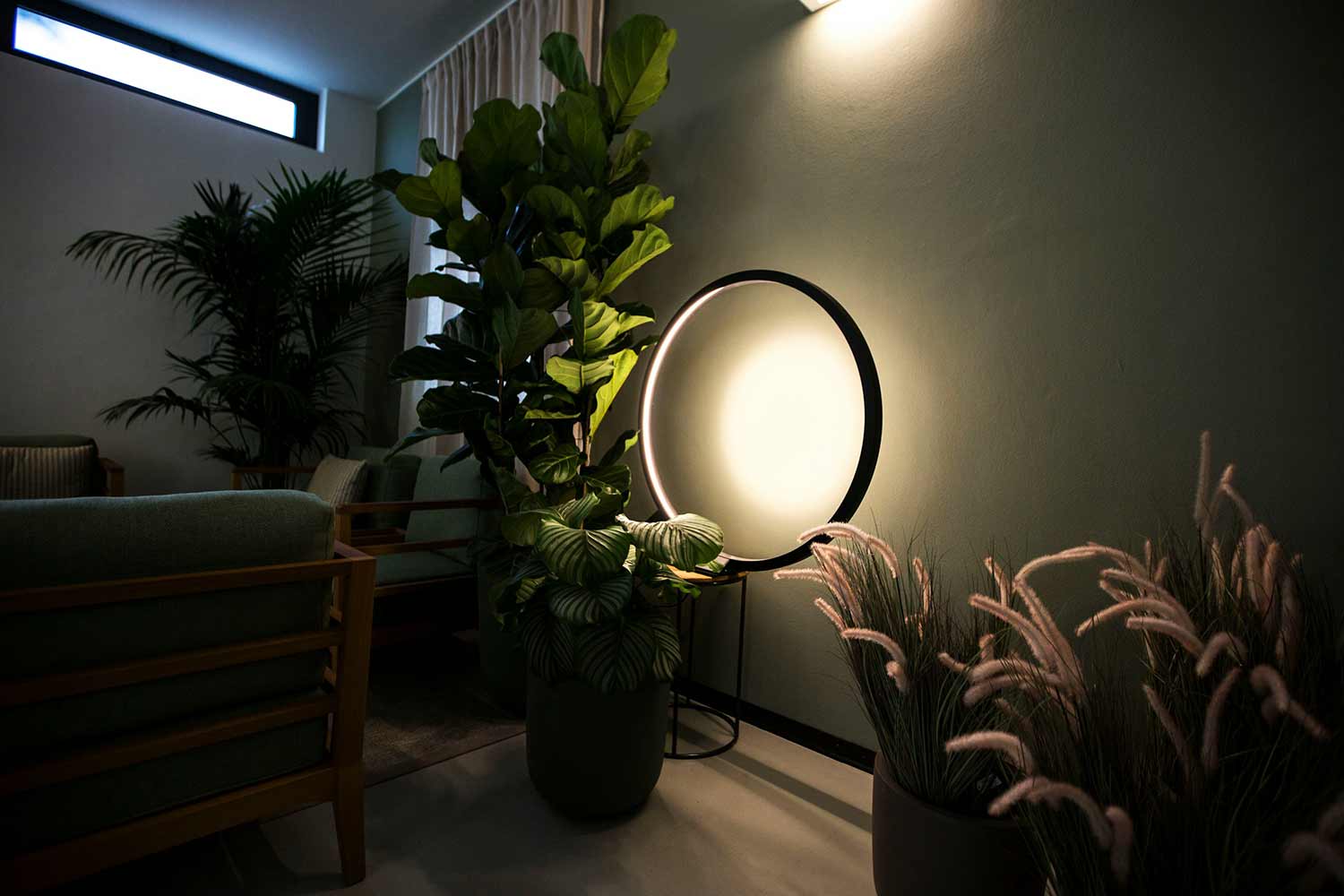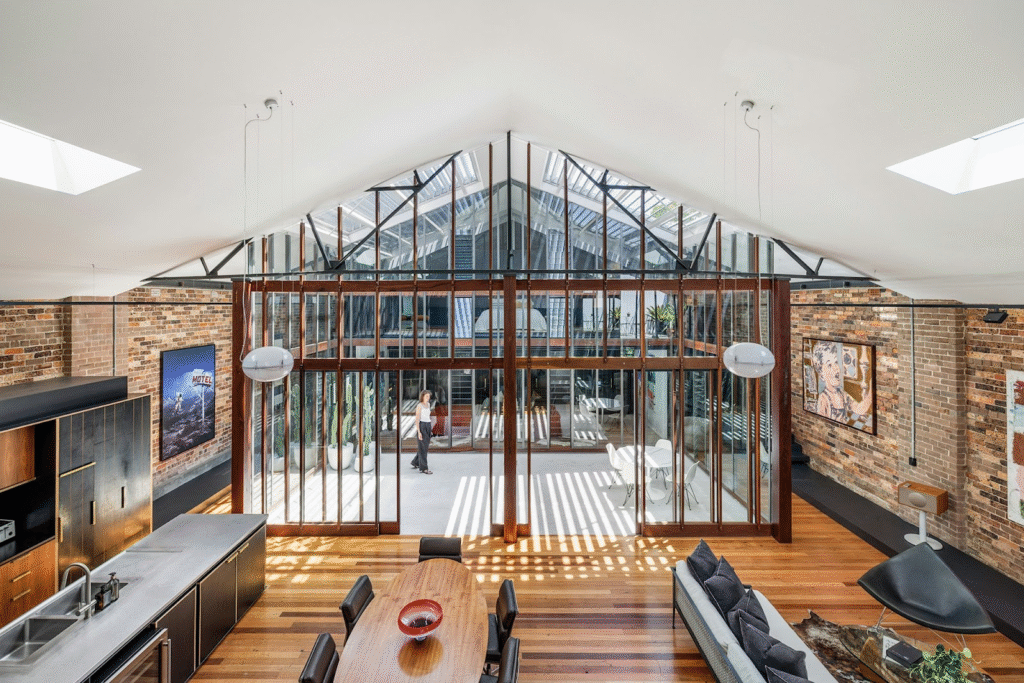Sustainable Interior Design: Eco-Friendly Ideas for 2025 as the world continues to embrace the need for a greener, more sustainable future, interior design is undergoing a transformation. The desire to create beautiful, functional living spaces while being mindful of the environment is not just a trend but a crucial movement. Sustainable interior design focuses on minimizing environmental impact, using eco-friendly materials, and making design choices that support a healthier, more sustainable lifestyle. As we look towards 2025, sustainable design will continue to evolve, bringing more innovative, eco-conscious ideas into homes and businesses alike.
If you’re seeking to create an eco-friendly space, this guide will offer a range of sustainable interior design ideas that can help you reduce your carbon footprint, incorporate natural elements, and transform your space into a greener haven.

1. The Power of Sustainable Materials
At the core of sustainable interior design lies the use of eco-friendly materials. This isn’t just about choosing materials that look good; it’s about making choices that benefit the planet and the people who live in the space. As we head into 2025, the market is flooded with innovative materials that are both stylish and environmentally responsible. The key is to use materials that have a minimal impact on the environment, both in their production and throughout their life cycle.
Eco-Friendly Wood
Wood is a popular material in interior design, but it can be environmentally damaging if not sourced responsibly. The solution? Reclaimed or sustainably sourced wood. Reclaimed wood comes from old buildings, barns, or even furniture, giving it a second life in your home. On the other hand, sustainably sourced wood is harvested in a way that ensures the forest remains healthy and productive for future generations. Forest Stewardship Council (FSC) certification is a great way to ensure that the wood you purchase is sustainably sourced.
Recycled and Upcycled Materials
Recycling and upcycling are fantastic ways to reduce waste and promote sustainable interior design. Consider using reclaimed tiles, repurposed furniture, or even fabrics made from recycled plastic bottles. Upcycled furniture, for instance, can add a unique and personal touch to your home while keeping items out of landfills.
Natural and Non-Toxic Paints
The paints we use can contain harmful chemicals that are detrimental to both the environment and our health. By 2025, natural and non-toxic paints are set to become the norm in sustainable spaces. These paints, often made from ingredients like clay, chalk, and plant-based oils, offer a healthier alternative to traditional paints. They are free from volatile organic compounds (VOCs), which contribute to air pollution and can affect indoor air quality.
2. Energy-Efficient Lighting and Appliances
As we move towards 2025, the push for energy efficiency will grow stronger. One of the easiest ways to make your interior more sustainable is to swap out traditional lighting and appliances for more energy-efficient options. LED lighting, for example, uses a fraction of the energy that incandescent bulbs do, and they last much longer.
Beyond lighting, consider replacing older appliances with energy-efficient models that have the Energy Star certification. These appliances consume less energy and reduce your household’s overall carbon footprint. The same goes for water-efficient fixtures, such as low-flow showerheads and faucets, which can significantly reduce water consumption while maintaining functionality.
Solar-Powered Features
Solar power is becoming increasingly accessible for interior design, particularly with the growth of solar-powered lighting and other small appliances. Solar-powered lights for outdoor spaces or solar panels for energy consumption can drastically reduce your reliance on traditional electricity sources.
Smart Thermostats
Another way to embrace energy efficiency in your home is by using smart thermostats. These devices adjust your heating and cooling system based on your preferences and daily routine, ensuring that you use energy only when necessary. Smart thermostats are an ideal addition to any sustainable interior design, as they save both energy and money.
3. Indoor Plants for Air Quality and Wellness
Incorporating plants into your interior design is not only aesthetically pleasing, but it also has environmental benefits. Indoor plants play a crucial role in improving air quality by absorbing carbon dioxide and releasing oxygen. They also help reduce indoor pollutants, making your space healthier and more comfortable to live in.
The growing interest in sustainable interior design has made biophilic design—incorporating natural elements like plants and natural light—an essential feature of modern interiors. Plants like the snake plant, pothos, and peace lily are excellent choices for improving air quality, and they also add a refreshing touch of greenery to your home.
For smaller spaces, vertical gardens or living walls can maximize plant life without taking up floor space. Incorporating plants into your space can provide a calming atmosphere and contribute to a more sustainable, healthy lifestyle.
How to Choose Plants for Sustainability:
- Opt for low-maintenance plants that require less water and care.
- Choose plants that are native to your region as they will thrive with less intervention.
- Consider plants that filter air naturally, like the spider plant or the English ivy.
4. Sustainable Fabrics for Upholstery and Textiles
The fabrics used for furniture, curtains, rugs, and cushions can have a significant impact on the sustainability of your space. Traditional textiles often use harmful chemicals and processes, which contribute to environmental degradation. By 2025, the trend will move more toward natural and eco-friendly fabrics that offer a sustainable alternative.
Organic Cotton and Linen
Organic cotton and linen are made without the use of pesticides or synthetic fertilizers, making them both better for the environment and safer for the people who use them. Organic cotton is a durable and soft option for upholstery or bedding, while linen is perfect for creating a relaxed, airy feel in any room.
Hemp and Bamboo
Hemp and bamboo are becoming increasingly popular as sustainable materials for textiles. Hemp is durable, biodegradable, and requires minimal water and pesticides to grow. Similarly, bamboo is a highly renewable resource that can be turned into a wide range of textiles, from bedding to rugs.
Recycled Fabrics
Recycled fabrics, made from old clothing or textile waste, offer a sustainable option for those looking to create a more eco-friendly space. These fabrics are durable, stylish, and help reduce the waste sent to landfills. Recycled polyester, for example, is made from recycled plastic bottles, giving a second life to materials that would otherwise be discarded.
5. Water Conservation in Design
As sustainability becomes more important, water conservation will be a key focus in sustainable interior design. Designing spaces that reduce water consumption is not only beneficial for the environment but also for your utility bills.
Water-Efficient Fixtures
Upgrading to water-efficient fixtures is an easy way to conserve water without sacrificing performance. Low-flow faucets, showerheads, and dual-flush toilets can reduce water usage by a significant amount, making them a staple in eco-friendly homes.
Greywater Systems
Greywater systems allow you to recycle water from sinks, showers, and washing machines to be used for irrigation or toilet flushing. This reduces the demand on fresh water while keeping your landscaping lush and healthy.
6. Minimalist and Multi-Functional Furniture
A minimalist approach to interior design not only helps create a cleaner, more organized space, but it also supports sustainable interior design by reducing consumption. By choosing furniture that serves multiple purposes, you can reduce the need for excessive pieces and make the most of your available space.
Multi-Functional Furniture
Multi-functional furniture is essential in small, sustainable spaces. Consider pieces that can be easily transformed or serve more than one purpose, such as a sofa that turns into a bed or a dining table with built-in storage. This reduces the need for extra furniture, saving both space and resources.
Timeless Design
Opting for timeless, durable furniture ensures that your pieces will last for years, reducing the need for replacements. Look for high-quality craftsmanship and materials that can withstand wear and tear. By investing in well-made furniture, you contribute to a more sustainable lifestyle.
7. Reducing Waste with Smart Design Choices
One of the most important aspects of sustainable interior design is minimizing waste. This involves thoughtful purchasing, careful maintenance, and the use of products that are designed to last.
Reuse and Upcycle
Rather than throwing away old furniture, try repurposing it into something new. Upcycling gives your items a second life and helps reduce waste. For example, turning an old wooden crate into a stylish side table or reupholstering a vintage chair can add character and charm to your home.
Buy Local and Eco-Friendly
Another way to reduce waste is by purchasing locally made furniture and decor. Local artisans and manufacturers often create products with fewer materials, which reduces transportation costs and the associated environmental impact. Additionally, locally made products tend to be more durable, meaning they will last longer and need fewer replacements.
8. Sustainable Flooring Options
The flooring you choose for your space plays a significant role in both the aesthetics and sustainability of your home. Many traditional flooring options, such as vinyl and carpets, contain harmful chemicals and contribute to environmental degradation.
Bamboo and Cork
Bamboo and cork are two highly sustainable flooring options. Bamboo is a fast-growing, renewable resource, and it is as durable as hardwood. Cork is made from the bark of cork oak trees and is a renewable resource that is naturally fire-resistant and insulating.
Recycled Materials
Recycled materials such as rubber, glass, or wood are gaining popularity in flooring design. These materials not only reduce waste but also offer unique textures and finishes that can add character and style to your space.
Sustainable interior design is more than just a trend—it is a movement toward creating spaces that are both beautiful and kind to the planet. As we approach 2025, there is no doubt that the demand for sustainable interior design will continue to grow, and with it, a host of innovative solutions and eco-friendly ideas will emerge. By embracing
sustainable materials, energy-efficient solutions, and mindful design practices, we can create homes and offices that are not only functional and stylish but also environmentally responsible.
Incorporating sustainable choices into your interior design doesn’t just benefit the environment—it also contributes to a healthier, more fulfilling lifestyle. From reduced waste to better air quality, the impact of sustainable interior design extends far beyond the aesthetic appeal of a space. Whether you’re revamping a single room or redesigning your entire home, every small change makes a difference. So, let’s embrace sustainability in all its forms and look toward a greener future in 2025 and beyond.







